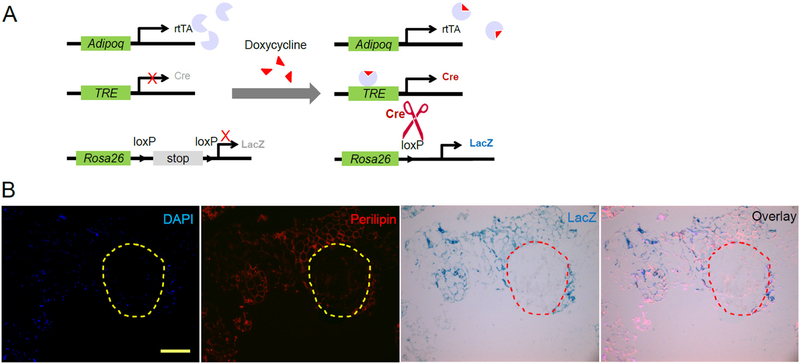Fig. 1.
Detection of de novo adipogenesis using AdipoChaser mice. (A) Schematic graph of the AdipoChaser system. Adiponectin-rtTA (Adipoq-rtTA), TRE-Cre and Rosa26-loxP-stop-loxP-lacZ triple transgenic mouse is hereby called the AdipoChaser mouse. It constitutively expresses rtTA in mature adipocytes but only expresses Cre when doxycycline (dox) is supplemented. The Cre will subsequently recombine the loxP sites and remove the stop cassette to allow expression of LacZ. The LacZ expression will persist even after removal of dox. But new adipocytes emerging from non-adiponectin expressing progenitor or stem cells after doxycycline removal will not express LacZ. LacZ reacts with X-gal (5-bromo-4-chloro-3-indolyl-β-d-galactopyranoside) and develops a dark blue color. So existing mature adipocytes will be labeled blue after dox supplementation, and any new adipocytes emerging after removal of dox will not be labeled. (B) Representative β-gal (blue) and Perilipin1 (red) staining of subcutaneous white adipose tissue in AdipoChaser mouse 6 weeks after Juvederm injection. Nuclei are counterstained with DAPI (blue). The circle indicates the boundary of Juvederm and adipose tissue. Scale bar: 250 μm.

